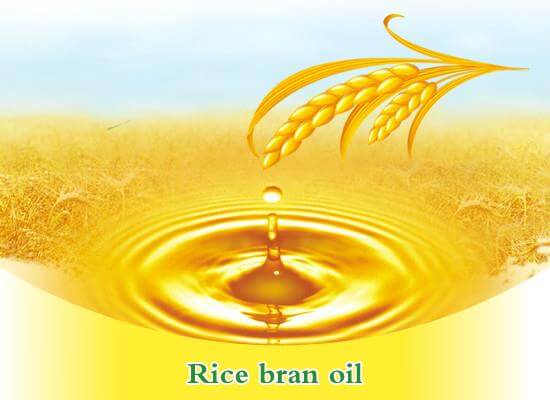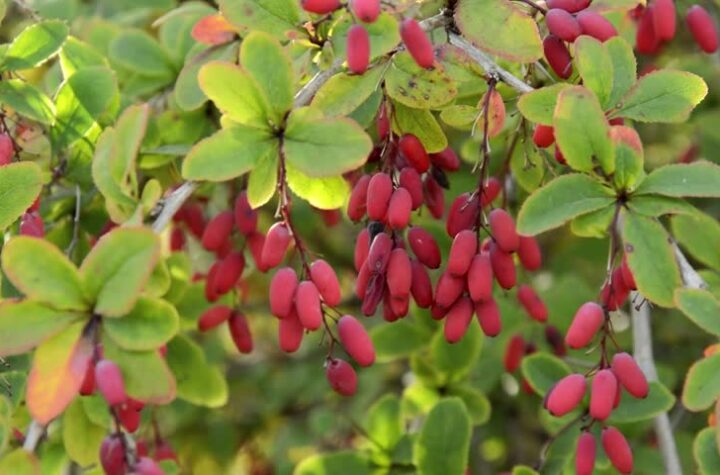
The priority for every nation is to give its citizens something to eat for proper nutrition and to make them disease-free. Today, with the rising population, it is challenging to provide every citizen well a nutritious Food. Today, We are using so much oil for cooking purposes, but it increases cholesterol and extra fat content in the body. Rice bran oil is the best alternative for it. Paddy grown in most nations is the second most used food in the world. But most of us only aware of the rice that comes from paddy while neglecting its other useful parts like rice bran.
Rice is a staple in many cuisines. It provides a lot of energy given its high content of starch but also provides other nutrients in the form of vitamins and minerals. Besides, it’s a source of income for many third world economies. The recent escalation in awareness of health has resulted in the increased consumption of vegetable oils in the last few years. We extract most of the vegetable oils from seeds or nuts. However, Rice bran oil is mined from rice bran which is a by-product obtained in the production of rice. Rice Bran contains many nutrients even though it is a by-product and considered waste.
Because it’s inexpensive and nutrient-dense it is mostly used as animal feed. 20-25% of Rice bran is Rice bran Oil, however, this depends on the method of milling, origin and the type of rice used. The oil is light yellow, with a slight smell and the taste is slight of rice.
How to produce it?
Table of Contents
Firstly, the rice is dehulled. Here the husk is separated from the kernel. Approximately 10kg of bran is obtained for every 100kg of paddy rice in the milling process.
Rice bran oil is mined from using organic solvents. There are many methods used to do this but previously the most common was the use of hexane. This was highly popular because the extraction was easy and low cost, hexane was highly available and its ability to extract a high quantity of oil. However, the oil was found to have a high amount of impurities and hexane pollutes the air.
Methods were proposed to reduce the use of organic solvents and a solution obtained was to use commercial protease in an enzymatic reaction which produced an oil higher in quality than through the method using hexane. The latest method found is using supercritical carbon dioxide which highly preserves the nutrients in rice bran oil and lower quantities of impurities than both.
The first stage obtained through either of the processes mentioned is crude oil. The oil extracted is then poured by refining to remove residual impurities and solids it then filters which to make it extra pure. The oil then goes through a process called winterization where it is extra cold filtered, so we remove any solid particles. It helps keep the rice bran oil you use for cooking clear and prevents it from clouding up.
This oil is said to be dark green with an odor, acidic pH, impurities and a large amount of free fatty acids that make it inedible. The crude oil is then refined to obtain edible rice bran oil which determines the nutritional composition of the oil. Phytochemical compounds found in rice bran oil are destroyed in the process of refining because these phytochemicals are believed to be highly lipophilic. This happens regardless of the method of refinement as you can either use a physical or chemical refining process. The process bleaches the color, purifies it through removing the wax, reduces the odor through deodorization via steaming and neutralizes the acidity by neutralizing the free fatty acids in the crude oil.
How to store it?
Although rice bran has high antioxidant content which prevents it from reducing its value with passaging time. But it is always best practice to keep it in cold places. We recommend keeping it away from sunlight in cold dark spots. If we store it correctly, it’s nutrient content stays for two years from the time of manufacturing. But always check the manufacturer recommends for its storage and shelf-life.
How does it work and what are its health benefits?
All vegetable oils have two classes of lipids; Saponifiable and non-saponifiable. Saponifiable lipids are also known as complex lipids. They have an ester as a functional group and are easily hydrolyzed. Non-saponifiable lipids have no ester group and therefore cannot be easily hydrolyzed. Fat-soluble vitamins including Vitamin A and E are also saponifiable lipids that are in Rice bran oil. There is a higher percentage of saponifiable lipids in rice bran oil than any other vegetable oil. This shows again that Rice bran oil is higher in its contribution to nutrition.
1. Antioxidant properties
At a molecular level, there is a constant production of free radicals through metabolic processes. These free radicals are highly reactive and can damage many systems in the body and have been related to altering genetic material and in turn, may cause cancer. Antioxidants deactivate these free radicals and minimize cell damage.
Rica bran oil contains many antioxidants as well as phytochemicals (tocotrienols, tocopherols, Vitamin A and Vitamin E). Phytochemicals have been found to control free radical production, in turn, exhibiting antioxidant properties. In general, exercise is linked to a healthy lifestyle and maintaining proper physiological parameters. However, it has also been linked to increased oxidative stress which means there is a higher number of free radicals being produced.
γ-oryzanol is a component that is in high concentration in Rice bran oil and a research article showed that introduction of γ-oryzanol into a group of rats that were being subjected to strenuous exercise ( 1 hour of swimming, 5 days a week) to induce free radical production, was found to control the oxidative stress irrespective of the concentration given.
2. Preventing Colon Cancer
Colon carcinogenesis is when the free radicals present in the intestines attack the genetic makeup of the epithelial cells causing hyperproliferation resulting in a carcinoma. A group of rats that showed signs of cancer in the epithelium of the colon were given a diet containing rice bran oil. These rats subsequently showed that there were fewer lesions formed and fewer tumors formed in the colon.
The enzymatic reactions discussed previously that reduce the formation of free radicals need substrates, it was found that the concentration of these substrates inclusive of glutathione, superoxide dismutase, and catalase increased. One step in colon carcinogenesis is fueled by iron. Because the intestine is full of iron especially in individuals that consume high amounts of red meat, this is a reaction that is a common occurrence.
Rice bran oil contains a compound known as phytic acid. Phytic acid has 6 phosphate groups in its structure and the phosphate blocks the reaction triggered by iron in the colon. Phytic acid extracted from rice bran oil was given to rats with colon carcinoma and it showed a reduction in tumor formation.
3. Curing lipid disorders
The current status of the economy, trends in fatty foods and the booming food industry leading to an increase in the availability of ‘unhealthy food’ with high content in fat in turn leading to a rise in cardiovascular diseases amongst the population.
The most popular risk factors for cardiovascular diseases have been identified as increased levels of cholesterol in plasma, increased levels of Low-density Lipoproteins (LDL) and decreased levels of High-Density Lipoproteins (HDL).
LDLs have been related to the development of atherosclerosis which is building of fat along the arteries again leading to cardiovascular diseases. High-density Lipoproteins transport the cholesterol from the blood and move it into the live-in order to be reused therefore decreasing the risk of cardiovascular diseases.
The increase of free radicals has also been linked to atherosclerosis as these damages the membrane of the arteries leading to a high permeability causing an increased risk of cardiovascular diseases. The general treatment is lifestyle changes but there is interference with pharmaceutical drugs for extreme cases.
Many researchers have put forward the ability of Rice bran oil and its active components to treat these disorders. In general, it has been found that Rice Bran oil can stabilize all lipid levels in a way that’s beneficial to the health of the human body.
One study used hamsters and fed them a balanced diet including rice bran oil. The results showed an overall decrease in cholesterol as well as Low-density lipoproteins. It also resulted in less cholesterol being absorbed.
The same group fed monkeys different types of vegetable oils and obtained the same results but the monkeys that were fed the rice bran oil did not have a decrease in HDL that occurred in the other vegetable oils. HDL is beneficial and therefore a decrease of which is not desired.
Another group of scientists tested the effect of γ-oryzanol extracted from rice bran oil on rats that had a build-up of lipids in the blood also known as hyperlipidemia. The group that was given the γ-oryzanol showed an overall reduction in serum lipids and an increase in HDL irrespective of the dose given. There was also combat against free radicals.
There was a group that gave rats a diet containing a high cholesterol diet as well as a group given a high cholesterol diet as well as Rice Bran Oil. The group that was given the additional Rice bran oil showed the lipid layers covering organs had decreased in weight. The lipid profile of the rats showed that the group given the RBO had an increase in HDL which, as mentioned before is important in moving the lipids out of the plasma.
The RBO rats also had a lower atherogenic index which is the measurement of the risk of development of plaques of atheroma and they again a decrease in free radicals produced due to oxidative stress showing antioxidant properties.
In addition to animals, there has also been researching carried out on humans. One group of 14 was divided into 2 with one getting a normal diet and the other getting a high lipid diet. The lipids were given in the form of vegetable oil including rice bran oil. As observed in the rats the lipid values, in general, had decreased significantly as well as the HDL levels had had a significant increase.
Another group of individuals was used in comparing the effects of RBO and sunflower oil. In both the groups, there was an overall decline in the total amount of cholesterol when RBO was used but the HDL levels remained constant. This reduction in the lipids was suspected to have been attributed to the γ-oryzanol component of Rice Bran Oil and a group of thirty men with high cholesterol was given this and it was found that regardless of the concentration of γ-oryzanol given, there was an overall decrease in the lipid concentration.
4. Replacement for Insulin?
The increase in blood sugar and the inability to process it is known as Diabetes Mellitus. There are two types; insulin-dependent and non-insulin dependent. The recent changes in lifestyle mentioned before have not only increased cardiovascular risk but also diabetes.
Diabetes also causes renal diseases. Vitamin E has been shown to decrease renal complications caused by diabetes. The tocotrienol-rich fraction of Rice Bran Oil contains high concentrations of Vitamin E and a few Rats that had diabetes was treated with this. 8 weeks later the group that was given the RBO showed improved renal function compared with the control group.
5. Anti-inflammatory effects
A study conducted showed that the phytochemical compounds found in Rice Bran Oil exhibit anti-inflammatory effects. Mice that had colitis were given γ-oryzanol and such extracted from the Rice Bran Oil. These were shown to reduce inflammation and treat GI tract diseases.
6. Treating skin disorders
Nanoemulsions developed of Rice Bran oil has shown to improve atopic dermatitis and psoriasis. The skin was shown to keep its pH and improve moisture.
7. Trans fat:
- How our body consumes various oils depends upon the molecular composition of the oil. Hydrogenating vegetable oils make the trans fat. It is highly used in industrial products like frying, baking, etc. And, trans fats are responsible for over 5,00,000 premature deaths from cardiovascular deaths every year, according to the World health organization (WHO). Now, WHO plans to eliminate all trans fats ingredients from the world food industry. According to various studies, it has no trans fat content which makes it future use more in the food industry. Also, the consumer need not change its taste of dishes while using it as it has almost the same taste as other cooking oils. Denmark is the first country in the world that removed trans fats in 2004.
- As I discussed in the previous point that it’s zero trans fat content makes it a good alternative for heart problem’s patients. Thus, It is a heart-friendly oil.
- Its low-fat content makes it a good food for obesity people. It also helps in reducing weight.
- It also helps in preventing unnecessary blood clotting.
8. Nutritional Information
| Composition | % |
|---|---|
| Triacylglycerols | 80.5 |
| Free fatty acids | 6.8 |
| Diacylglycerols | 4.8 |
| Monoacylglycerol | 1.7 |
| Oryzanol | 2.0 |
| Phosphatides | 1.3 |
| Wax | 2.9 |
9. Other health benefits:
- It has a long shelf life – these natural anti-oxidants keep it stable and eliminate the need for chemical preservatives which may have side effects on some person’s body.
- It is a good source of Vitamin H or Biotin which makes your hair stronger. Also, it has vitamin E, omega 3 and omega six which prevents whitening of our hairs.
- It is also a better alternative for high cholesterol patients than other cooking oil as it is zero cholesterol oil.
- Its low viscosity means that it’s runnier than other oils, so you need less oil to cook with and less of the oil is absorbed into your food.
- It contains Gamma Oryzanol which is an anti-oxidant and it can help lower cholesterol.
- It has a very high smoke point (250°C or 482°F) which means you can cook with it at higher temperatures without it breaking down as quickly as other oils.
- Iscobolin present in it is perfect for our skin. By acting as a moisturizer, it helps in getting rid of wrinkles and dead skin on the face. Thus, it prevents aging symbols shown on your face.
- It also prevents our skin from sunstroke and the harmful radiation of the sun.
Safety Assessment
A chicken embryo model was used to assess the safety of the consumption of Rice Bran Oil. RBO was injected and resulting tissue samples were collected. The usual decrease in serum lipids was found however no abnormalities were found proving that there is no toxic effect of Rice Bran Oil.
Interactions with medications
Rice Bran itself has a high content of Fiber and can obstruct the metabolism and absorption of oral medication. However, no interactions for the oil itself are identified to date.
Dosage:
For Hypercholesterolemia the tocotrienol-rich fraction was given 50mg per day for 35 days. Also, another study indicated the dosage of γ-oryzanol was given of 500 – 600 mg per day for 9 weeks.
Frequently asked questions
I put my Rice Bran Oil in the fridge, and now it’s cloudy. Can I still use it?
YES! Just use it as usual. If you let it warm up to room temperature you’ll see it return to its clear state as the solid particles “melt,” and it will be runnier again.
What does it do to our immune system?
Its high antioxidant content prevents our body from the free radical attack which helps maintain a healthy immune system.
Does rice bran oil available in market contains any preservatives?
No – there are no chemical preservatives in it. The high natural anti-oxidants content means that the oil is stable.
How do I use Rice Bran Oil instead of butter in my baking?
When the recipe calls for butter, you can use 80ml of rice bran oil plus 20ml of milk instead of 100mg of butter. You can always use it in your favorite recipes, but if you’re looking for new ideas.
What does it mean when you say Rice Bran Oil is hypo-allergenic?
It is wheat-free, gluten-free, dairy-free, soy-free, egg-free and peanut-free. What does it contain? One thing – rice bran. It is free of the most common food allergens.
Is Rice Bran Oil safe for people with peanut allergies or other nut allergies?
YES! it is made in a nut-free facility.
Is it safe for those on a Heart-Healthy or low cholesterol diet?
YES! It is a balanced fat, high in antioxidants and contains no cholesterol. Consumed in moderate amounts, it might even help lower cholesterol.
How does the anti-oxidant content of Rice Bran Oil compare to other oils?
It’s higher! Rice Bran Oil has more anti-oxidants than any of the other used cooking oils – even Olive Oil!
How does Rice Bran Oil compare to Olive Oil available in the market?
Rice Bran Oil contains significant amounts of antioxidants – 3 times that of Olive Oil. It also has a higher smoke point (482 degrees Fahrenheit versus 360 degrees for Olive Oil). Rice Bran Oil is less viscous, so it takes less oil to coat your food. It also has a lighter flavor than Olive Oil, which makes it perfect for dressings and marinades.
How does Rice Bran Oil compare to Coconut Oil?
It has a higher smoke point, it’s less viscous (takes less oil to coat your food) and has 77% less saturated fats than Coconut Oil does.
How does Rice Bran Oil compare to Canola Oil?
Rice Bran Oil has twice the anti-oxidants that Canola Oil has, and can be heated to a higher temperature during cooking (482 degrees Fahrenheit versus 435 degrees for Olive Oil) before the anti-oxidants in the oil break down.
Does it have a taste?
Rice Bran Oil has a mild fresh taste. It won’t overpower your food or leave an oily aftertaste so you can focus on the flavors in your diet. Some people say it has a nutty taste. It comes from the brown rice grains used to make rice bran oil.
Why should I use Rice Bran Oil for frying instead of Canola or Vegetable Oil?
Because the smoke point of it is higher than other oils, you can fry or BBQ whatever you marinade at higher temperatures without worrying about your oil breaking down. The lower viscosity also means you’ll need less oil to coat your food.
Why is Rice Bran Oil preferable to Olive Oil for pan-frying?
Its excellent light flavor means the flavors in your dishes are the focus. While the higher smoke point keeps the oil from forming free radicals on heating. The smoke point of it is much higher than Olive Oil.
Why is Rice Bran Oil ideal for stir-frying?
You will need less oil to coat your pan (because of the low viscosity), and less will be absorbed into your food. The light taste will keep the focus on the flavors you’ve chosen for your dish.
Can I make salad dressings with it?
YES! The great light taste means it’s the perfect way to highlight your chosen flavors in a salad dressing or marinade, and because of the high smoke point you can fry or BBQ whatever you marinade at higher temperatures without worrying about your oil breaking down. The lower viscosity also means you’ll need less oil to coat your food.
Are there other things Rice Bran Oil can be used for besides cooking?
Yes! It is fantastic for craft projects, skin and hair care, and more.



More Stories
12 medically proven health benefits of Berberis vulgaris
Ylang Ylang essential oil: Benefits, Uses, & Side Effects
What is probiotics or probotics and what are its different strains?